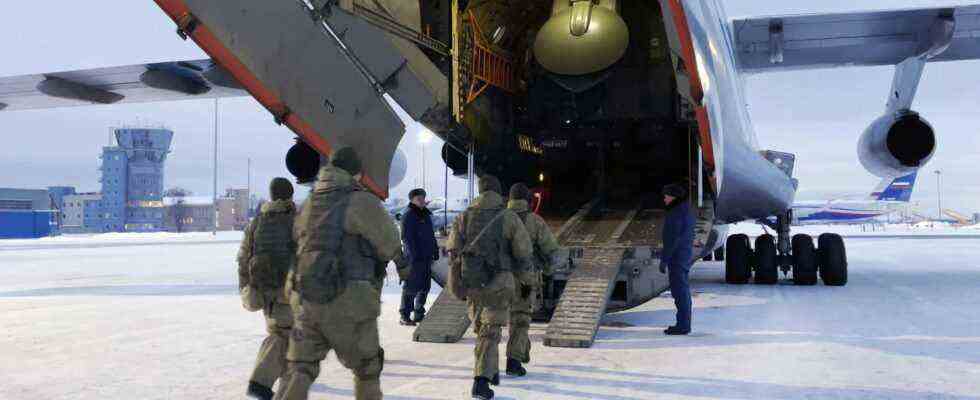Status: 06.01.2022 12:33 p.m.
On Wednesday evening, Kazakhstan’s president asked the Russian-led security alliance CSTO for assistance. A few hours later, Russian soldiers landed in Kazakhstan. Whom does the alliance serve?
It is a first in the 30-year history of the organization of the Treaty on Collective Security (CSTO): For the first time, the security alliance led by Russia has responded to a member state’s request for military assistance. Russian paratroopers landed in Kazakhstan just hours after President Kassym-Shomart asked Tokayev for assistance against a “terrorist threat” in the country.
It was Armenia’s Prime Minister Nikol Pashinyan, of all people, who announced the decision of the organization to send a contingent of “peacekeeping troops” “in view of the threat to national security and the sovereignty of the Republic of Kazakhstan,” as his government announced on Twitter.
Armenia currently holds the chairmanship of the CSTO – the country that sought assistance in vain last year when it saw its own sovereignty and security threatened by attacks by neighboring Azerbaijan on its territory. But neither Russia nor any of the other member states Belarus, Kazakhstan, Kyrgyzstan and Tajikistan wanted to provide military support to the ally within the CSTO.
Assistance according to interests
Article 4 of the CSTO Charter provides for a duty of assistance: “In the event of aggression (an armed attack that threatens security, stability, territorial integrity and sovereignty) against a member state, all other member states shall act immediately upon request of that member state the necessary help, including military help. “
But this article is obviously interpreted according to interests. In the case of Armenia, the other CSTO states did not want to intervene in the border conflict with Azerbaijan. In the case of Kazakhstan, on the other hand, military operational capability is demonstrated, especially on the part of Russia: Although a large part of the armed forces are currently concentrated on the border with Ukraine, Russian soldiers landed in Kazakhstan within a few hours.
Neither has anything comparable happened in recent years during unrest – for example in Kyrgyzstan or when the border conflict between Tajikistan and Kyrgyzstan escalated in early 2021.
Cheap weapons from Russia
In this respect, the CSTO has received little attention in recent years, even though there have been meetings, for example, of the foreign ministers and military representatives on security-strategic issues, military exercises are held together and there is a rapid reaction force. The member states also benefit from the fact that they can buy weapons from Russia at reduced prices.
However, Georgia, Azerbaijan and Uzbekistan did not extend their membership in 1999 – states that want to act independently of Russia, which is directed by the CSTO, while the other states hardly cooperate with one another.
The intervention in Kazakhstan brings back memories of the Warsaw Pact, when Russian troops marched into what was then Czechoslovakia to crush the 1968 uprising. The leadership of the country was able to stay in power, but lost sovereignty.
What is Putin up to?
Now the question arises again what Moscow plans to do – this time in Kazakhstan. Russian President Vladimir Putin has questioned Kazakhstan’s statehood in the past. Around 3.5 million Russians live mainly in the area of Kazakhstan’s border with Russia – and it was not until December that Putin declared at his annual press conference that Russia’s low population was a “geopolitical problem”.
For years, Russia has been pursuing the policy of distributing Russian passports in neighboring countries and threatening to defend the Russian population.
In Kazakhstan it will now become clear what the purpose of the CSTO’s mission is ultimately to serve – and how far Russia respects the sovereignty of the member states.

